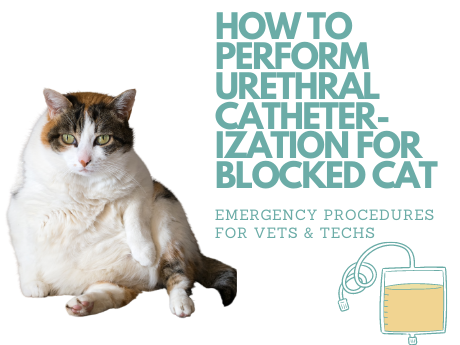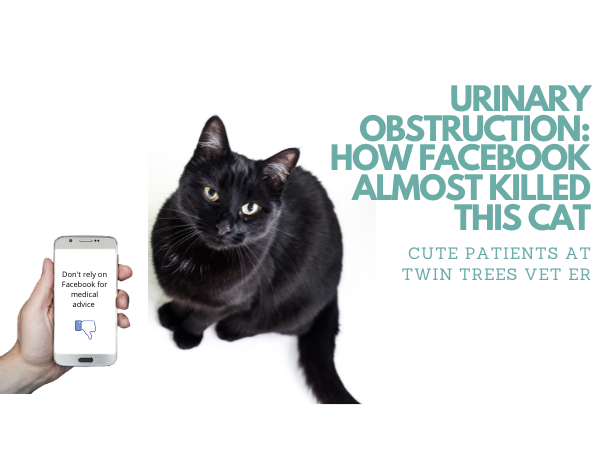Urinary blockage is a very common problem in male cats, but it can be seen in all pets. Urinary blockage is an emergency! It can become fatal if left unattended, but can usually be fixed if caught in the early stages.
When the urinary tract becomes obstructed, a cat is unable to expel urine and the bladder quickly overfills, causing pain and the build-up of toxins in the blood. So it is very important to know the signs and symptoms of a urinary blockage so that you can keep your little fur baby safe and out of trouble.
Did you know?
A urinary blockage can happen suddenly. It usually happens because the urethra becomes blocked (the urethra is the little tube that allows urine to drain from the bladder to the outside world). The obstruction may be due to inflammation or severe spasm of the urethra, or it may become clogged by bladder stones, crystals, or other material. Some types of cancer, and even spinal cord injuries, can also cause urinary obstruction.
Things to look out for
- Straining to urinate
- Frequent and/or prolonged attempts to urinate
- Urinating small amounts
- Crying out when urinating
- Excessive licking of the genital area
- Urinating outside the litter box
- Blood in the urine
It is best to check-in with the veterinarian if you notice any of these signs as soon as possible to save your little one the pain and to save your wallet the major expense of a urinary blockage later down the track.
It is essential to catch a blockage in the early stages to minimize the risk to the kidneys and stress for both you and your little friend. If your cat has a regular occurrence of straining when urinating, then a quick trip to the vet to get a preventative plan is a lot more cost effective and less stressful than unblocking a urinary tract.
Who is at risk?
Any pet can develop a urinary blockage, but male cats are at a higher risk due to having a narrow urethra, which can easily become blocked and cause problems. Every type of cat whether it be a pure bred or mixed, entire or de-sexed, male or female can develop a urinary blockage. Once a cat has experienced a urinary blockage once in their life, they become more susceptible to a re-occurrence down the line. This is why it is important to talk to your vet about preventative strategies, especially after your pet has had problems in this area.
How does it become blocked?
There are a variety of factors that can contribute to a blocked urinary tract:
- Crystals and stones are very common causes of urinary tract blockage. There are several types of crystals that can form in the urine; this is more common when the urine is very concentrated, or when the pH levels are very high. A diet that does not support hydration essentially creates a higher urine concentration in the urinary tract, making it easier for crystals and stones to form in the urine.
- There are several other causes of urinary blockage, including inflammation, spasm of the urethra, some types of cancer and even spinal cord injuries.
Diagnosis
Never fear, the veterinarian’s here!
On consult, the veterinarian will ask you a few questions about your fur baby’s behavior to get an overall assessment. They will perform a physical examination and then gently feel the abdomen to check the bladder size. If the bladder feels enlarged and firm, it is likely that an obstruction is present. A blood test may be performed to help get an overall evaluation of how severe the effects of the might already be.
A cardiac arrhythmia may be present if the obstruction has been present for more than just a few hours, due to the buildup up of potassium in the bloodstream. The excess potassium in the body is eliminated through the urine, so when the urine cannot escape the body, potassium levels can build up very quickly. Most of us hear the word potassium and it may not sound like a big deal, but when potassium levels get too high, it becomes toxic to the heart and can cause death. Did you know that potassium chloride is used in the lethal injection solution for prisoners receiving the death penalty in many parts of the USA?
Your veterinarian will also be looking at the kidney values when addressing the blood work results. If urine is not able to be expelled because of the blockage, then the kidneys will not be able to do their job and ‘waste’ materials that are usually sieved through the kidneys and out the urinary tract, will build up in the bloodstream. Further testing might be necessary depending on the diagnosis such as an x-ray or/and ultrasound which will help to gain a better evaluation of the situation.
Testing of the urine is needed to understand why the blockage occurred. Urine tests (called urinalysis and urine culture) will reveal the presence of crystals, white blood cells, red blood cells, protein and bacteria in the urine. It also will reveal the concentration and pH of the urine. A high PH and highly concentrated urine makes it more likely for crystals to form in the urine.
Treatment
If it is deemed that the kitty is in fact blocked or partially blocked, then further work will be needed to avoid serious damage to the kidneys and heart. Your fur baby will need pain management, IV fluids and sedation so that the urinary tract can be unblocked, however your kitty will need to be stabilized before any unblocking occurs. To unblock a urethra, a narrow tube called a urinary catheter is passed into the urethra. which flushes a sterile solution in an effort to dislodge the obstruction back into the bladder. Further treatment will depend on the severity of the blockage. After the blockage has been relieved, most pets will need to be hospitalized with intravenous fluids and a urinary catheter (connected to a collection bag). Once the urine has cleared up and the kidney values and electrolyte levels have normalized, the urinary catheter can be removed. The pet is usually not sent home until he has demonstrated that he can urinate voluntarily. Depending on the severity of the blockage, hospitalization can be as short as several hours to several days, or more.
For male cats that have had a recurrence of urinary blockage, there is a surgery that can be performed to reduce the risk of future blockages. This surgery changes the anatomy of the male urethra, making it shorter and wider (more like a female urethra). This surgery is called a “perineal urethrostomy” or PU, and is usually performed by a veterinary surgical specialist. Surgery is usually considered a last resort, when other preventative medical strategies (diet change, etc.) have failed. There can be side effects associated with this type of surgery such as bleeding, narrowing at the surgical site, urinary incontinence and a greater incidence of urinary tract infection.
Prevention, Prevention, Prevention!
Prevention is aimed at addressing the underlying cause of the blockage. Because most blockages in male cats occur because of urine crystals, simple adjustments in your kitty’s day to day lifestyle can help to prevent crystal formation.
THINGS THAT YOU CAN CHANGE ARE:
- Dietary change: Change to a diet that provides urinary support. Specific prescription urinary support diets are available at your veterinary clinic, which help solve pH imbalances that cause crystal formation.
- Increasing water intake or feeding a canned diet promotes better hydration and more diluted urine, which prevents the buildup of urinary crystals and bladder stones.
- Weight management: This can reduce the risk of urinary blockage, as obese cats are at higher risk. Your family vet can help your pet attain the ideal body condition.
- Stress management: Cats are very emotional animals and sometimes emotional stress (separation anxiety, bullying from other pets in the household, etc.) can precipitate urinary blockage. There are entire chapters in the veterinary literature devoted to stress-induced urinary tract disease and stress management strategies in cats. Your family vet and experienced pet behavior specialists are your best resource for this.
TAKE HOME POINTS:
- Urinary obstruction is a true life-threatening emergency! If left untreated, it will result in severe illness and eventually death. If you think your pet is experiencing this, call the emergency vet right away and don’t wait too long.
- The emergency treatment of urinary tract obstruction and the days of hospitalization that usually follow can be very expensive. Even though this is a problem that veterinarians can usually fix, sadly, many pet owners cannot afford the cost of treatment and must decide to surrender their pet or have it euthanized. Having medical insurance can be life-saving for these types of situations, so if your pet does not have medical insurance, please look into it before a problem like this happens.
We would like to thank our lovely veterinary nurse, Brittney Lyle, for her hard work on researching and writing this post. Thank you Brittney!
RELATED CONTENT:

For further information on urinary blockage in cats, please visit:
- http://www.veterinarypartner.com/Content.plx?P=A&S=0&C=0&A=1111
- www.petmd.com/cat/conditions/urinary/c_ct_urinary_tract_obstruction
WELCOME TO PET PARENTING 101! On this playlist, you will find all of the information that you need to be a responsible and informed pet parent, so that you can keep your furbaby safe from danger and be prepared for the worst case scenario. The year is 2020 and the days of being a "pet owner" are over. There was a time when pets were considered property, and people thought that if their dog got sick or broke a leg- "put it to sleep and get a new one." Our society's beliefs on the responsibilities of pet guardianship have evolved, but there is still a disconnect when it comes to giving pet parents the information that they need to be responsible and informed pet guardians.


